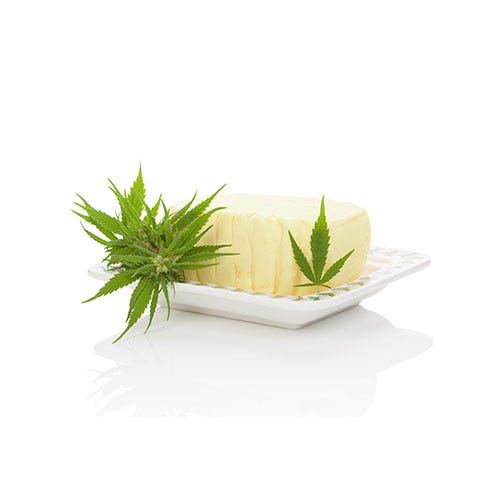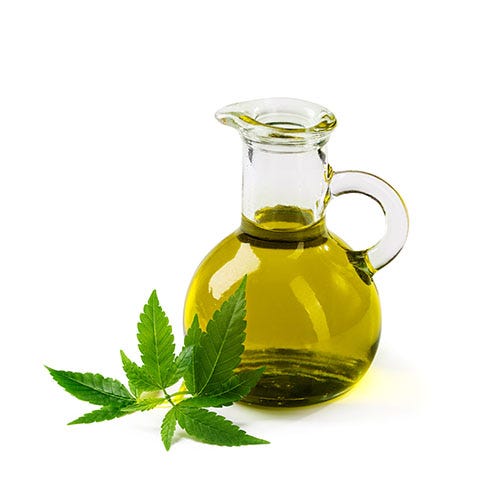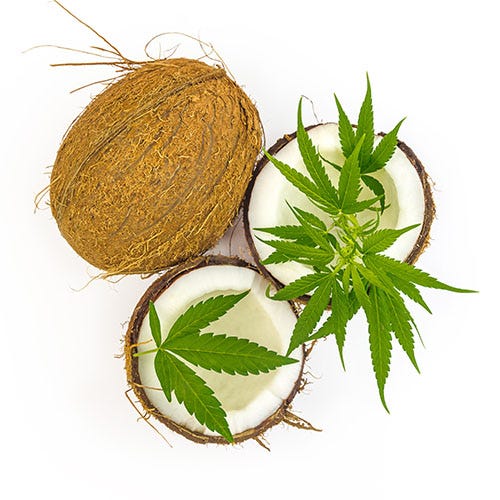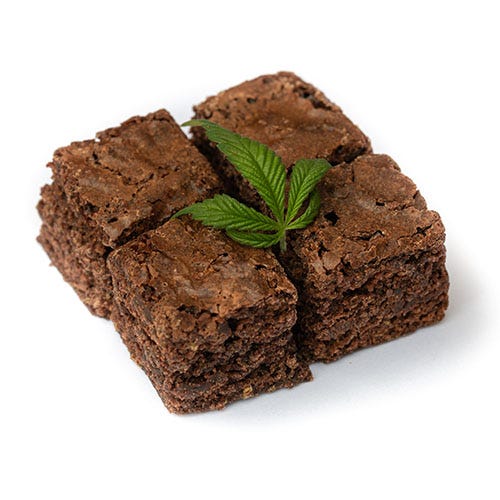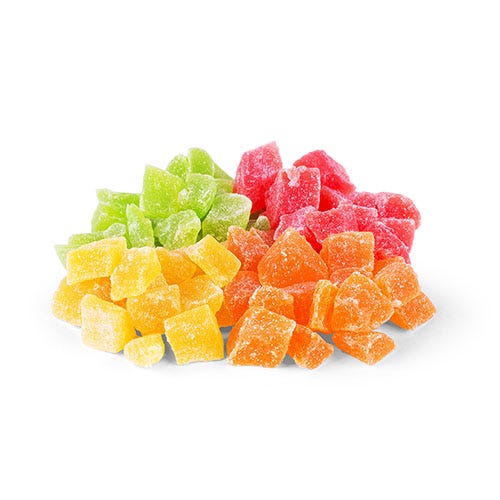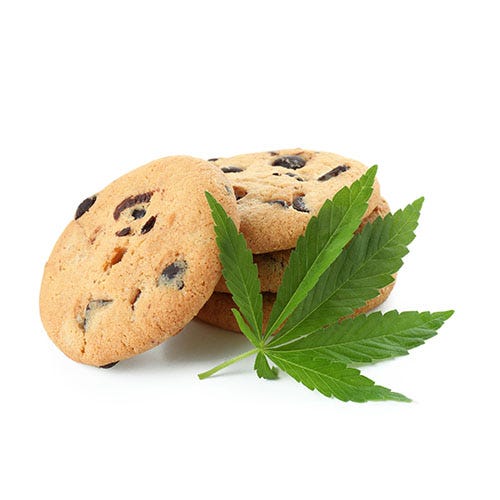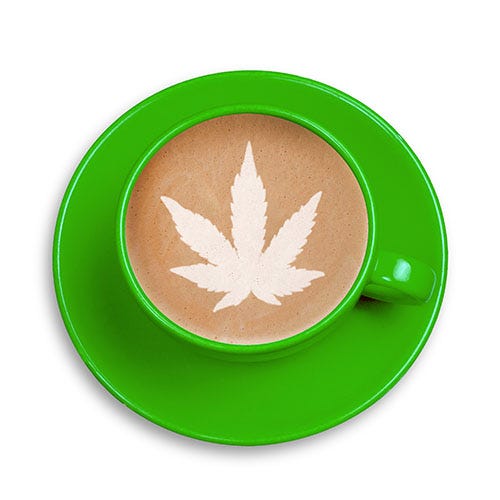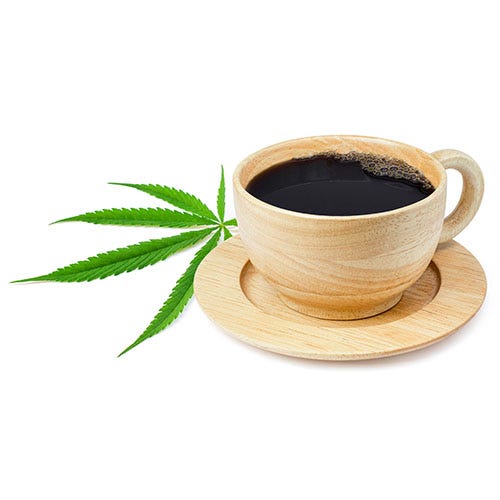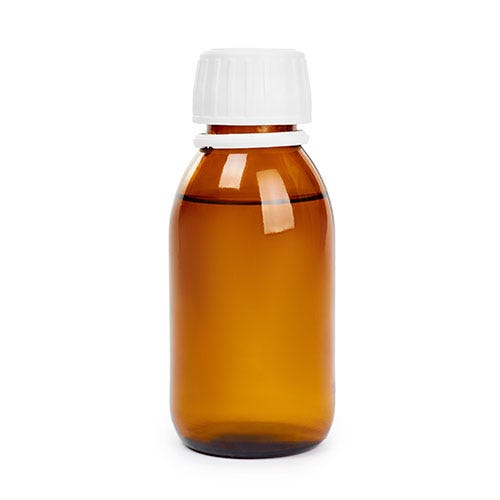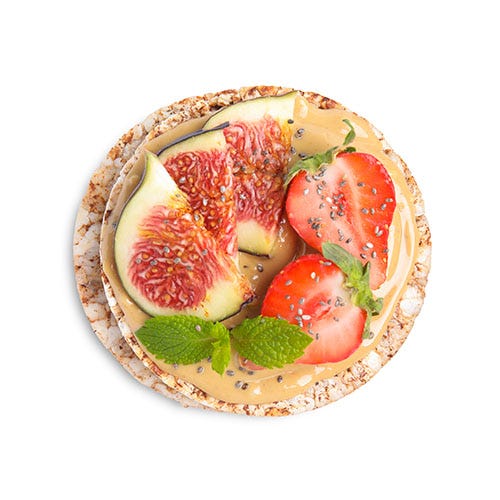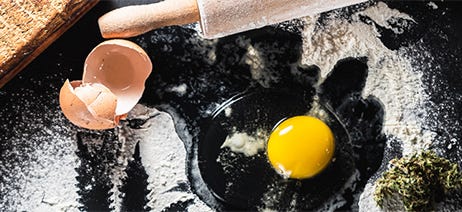
How to Make Edibles: Cooking with Cannabis 101
Making edibles at home is one of the most creative and rewarding ways to explore cooking with cannabis. Whether you’re baking classic marijuana brownies or experimenting with creative dishes, knowing how to make edibles can take your cannabis experience to a new level.
In this guide, you’ll learn everything you need to know about how to make edibles, including:
- Intro to Making Edibles
- What Ingredients Do You Need?
- Always Start With Decarboxylation
- Calculate Your Potency
- Choose Your Recipe
- FAQs About Cooking With Cannabis
Intro to Making Edibles
Cannabis edibles are a great way to consume cannabis, whether bought from a dispensary or made at home. While marijuana brownies are iconic, cannabis-infused foods have been enjoyed for thousands of years.1
Two common methods for making edibles are:
- Creating an infused ingredient like cannabutter or canna-oil for savory or sweet recipes.2
- Infusing cannabis directly into beverages like tea (no cannabutter needed).
This guide focuses on using infused ingredients for better flavor and versatility.
What Ingredients Do You Need?
To get started with making edibles, you’ll need cannabis flower and a fatty base ingredient for infusion. And then you can simply substitute your recipe’s fatty ingredient for the new cannabis-infused one.
Cannabis Flower
Cannabis flower is the heart of any edible recipe. Whether you’re using whole flower, popcorn nugs, or shake, the type of flower greatly impacts flavor and potency. Gourmet edibles benefit from your understanding of terpenes—compounds responsible for a strain’s aroma, flavor, and effects—so focus on terpene profiles rather than indica or sativa labels.3
Some strains, like Blue Dream, Jack Herer, and Granddaddy Purple, are better for edibles.4 A good rule is one cup of cannabis per cup of fat (butter or oil) to ensure cannabinoids bind effectively for maximum potency.


Fatty Base
A fatty base is essential for cannabis edibles as cannabinoids are lipophilic and need fat to activate.5 Saturated fats, like butter, are ideal for baking, while unsaturated fats, like coconut oil,6 work in lighter recipes. These bases can be used in recipes from baked goods to savory dishes. The best part? You don’t need to decide your recipe immediately—prepare, store, and use the infused ingredient whenever inspiration strikes.
Cannabutter
Cannabis butter, or cannabutter, is butter infused with the active compounds, such as THC and CBD, from cannabis flowers. Easy to prepare and customizable in potency and flavor, cannabutter is perfect for everyone from kitchen novices to seasoned chefs.
Canna-Oil
Canna-oil is a versatile choice for cooking. To make it, you'll need to infuse oil with decarboxylated cannabis flower. Once infused, the oil is strained, and it can be used in various recipes, from savory dishes to sweet treats. Just make sure you store it in a cool, dark place to ensure it keeps for as long as possible.
Cannabis Coconut Oil
Versatile, delicious, and healthy, cannabis coconut oil really can do it all. When choosing your coconut oil, you'll need to decide between refined, unrefined, or MCT oil. Knowing how you plan to use your infusion can help guide this decision.
Always Start with Decarboxylation
No matter what recipe you’re making, decarboxylation is a must. This process activates cannabinoids, converting THCA into THC, which provides the psychoactive effects. Without decarbing, your edibles won’t have the desired impact. You can bake the cannabis in an oven or sous vide. Decarb temperatures and times vary, but a common approach is 240-250°F (115-120°C) for 30-40 minutes.8
Calculate Your Potency
Dosing edibles can be tricky, but calculating potency helps control the desired experience and effect. Here’s what to consider:
Account for THCA Conversion
Cannabis flower contains a percentage of THCA, the non-psychoactive version of THC because it hasn’t been decarboxylated yet. When you decarb, about 75-88% of the THCA converts to THC.9


Do the Math
Calculating edible potency might sound tricky, but a little math goes a long way. We like to use this formula:
Total THC (milligrams) = grams of cannabis x 1000 x THCA percentage x THC retention after infusion
For example, if you’re making a cup of cannabutter with 10 grams of cannabis at 20% THCA, and 70% THC remains active after infusion, then:
10 x 1000 x 0.20 x 0.70 = 1,400 milligrams of THC
This simple formula helps you control dosage, ensuring your edibles are just right.
Mix & Portion Everything Evenly
Achieving uniform distribution of cannabinoids can be challenging. These plant compounds often settle at the bottom of infused ingredients. Here are some tips to help you mix and portion evenly:
- Scoop from the bottom of your cannabutter or cannabis oil.
- Slice cannabutter vertically instead of just scraping from the top.
Choose Your Recipe
Once you've mastered the basics of infusing your ingredients, it's time to make your recipe. Don’t have one? Cannabis-infused recipes are as diverse as any other culinary creations. From brownies and gummies to savory dishes like cannabis-infused butter chicken, you can find a recipe that caters to your preferences.
Store Your Homemade Edibles
Proper storage is essential to maintain the freshness and potency of your homemade edibles. Keep them in a cool, dark place, away from direct sunlight and heat. Seal them in an airtight container to prevent odor leakage and keep them out of reach of children or pets. Then, make sure you eat them in a normal amount of time. You’re not going to leave a sleeve of cookies open on the counter, so don’t leave your edibles sitting around either. They’ll get stale, and worse, they’ll lose some of their potency.
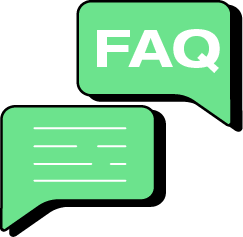

FAQs About Cooking with Cannabis
Cooking with cannabis raises a lot of questions, especially for beginners. From understanding techniques like decarboxylation to tips for handling intense aromas, we’ve covered everything you need to know to cook with cannabis with confidence.
Will my house smell like cannabis?
Your house may smell like cannabis when making edibles, but it’s temporary. During cooking, especially decarboxylation, expect some aroma, but proper ventilation helps.
Do I have to decarboxylate my flower?
Decarboxylation is essential to activate the cannabinoids in your flower. Without it, the THC in your edibles won’t have psychoactive effects.10
How long does it take to make edibles?
It depends on the recipe. Quick options like cannabis firecrackers can be ready in under an hour, while infused ingredients like cannabutter or canna-oil may take longer but can be stored for future use.
Can I add raw flower to my edibles?
You can use raw cannabis flower to make edibles, but the effects differ. Raw flower contains THCA, which isn’t psychoactive like THC, but it may offer therapeutic benefits, such as relaxation or insomnia relief.11
Should I pick sativa or indica strains?
While strain type matters, instead, focus on terpenes and cannabinoids for edibles. Terpenes can affect the flavor and potential effects of your recipe. Strains like Blue Dream and Granddaddy Purple are popular for edibles.
Will my edibles taste like marijuana?
The flavor of cannabis can come through in your dish, mainly if you use a large amount of the infused ingredient. Masking the taste with rich flavors like chocolate or spices can help.


Make Your Own Edibles at Home
Learning how to cook with cannabis is a game-changer for enthusiasts. From snacks to gourmet meals, the options are endless with infused ingredients like cannabutter or canna-oil. Whether you’re making hot chocolate, drizzling oil on a salad, or baking cookies, the process is fun and rewarding. With creativity and practice, you’ll master cooking with cannabis and craft dishes that perfectly suit your tastes.
Sources:
1. “A global history of cannabis edibles,” Leafly, July 28. 2020, https://www.leafly.com/news/canada/canada-world-history-cannabis-edibles
2. “How to make edibles: Leafly’s guide to cooking with cannabis,” Leafly, April 8, 2022, https://www.leafly.com/news/lifestyle/cannabis-baking-essential-recipes
3. “10 Best Weed Strains for Beginners,” Leafwell, October 7, 2024, https://leafwell.com/blog/10-best-cannabis-strains-for-beginners
4. “7 Best Strains for Edibles,” Leafwell, October 7, 2024, https://leafwell.com/blog/best-strains-for-edibles
5. “Oral administration of cannabis with lipids leads to high levels of cannabinoids in the intestinal lymphatic system and prominent immunomodulation,” National Library of Medicine, November 2017, https://pmc.ncbi.nlm.nih.gov/articles/PMC5674070/
6. “Cannabis and coconut oil: Benefits, uses & how to make it,” Leafly, May 9, 2024, https://www.leafly.com/learn/consume/edibles/coconut-oil-edible
7. “Elevate Your Edibles: How Incorporating Healthy Fats Enhance Cannabis Absorption,” Veriheal, July 11, 2023, https://www.veriheal.com/blog/elevate-your-edibles-how-incorporating-healthy-fats-enhances-cannabis-absorption/
8. “Cooking With Cannabis: 10 Tips to Help Create Delicious Edibles,” Leafwell, October 7, 2024, https://leafwell.com/blog/cooking-with-cannabis
9. “How to make edibles: A beginner’s guide,” Weedmaps, https://weedmaps.com/learn/products-and-how-to-consume/make-edibles-home
10. “How to Make Premium Cannabutter, Step by Step,” Food & Wine, January 7, 2020, https://www.foodandwine.com/cooking-techniques/cannabis-how-make-cannabutter-cooking-baking
11. “Effectiveness of Raw, Natural Medical Cannabis Flower for Treating Insomnia under Naturalistic Conditions,” National Library of Medicine, July 2018, https://pmc.ncbi.nlm.nih.gov/articles/PMC6164964/


